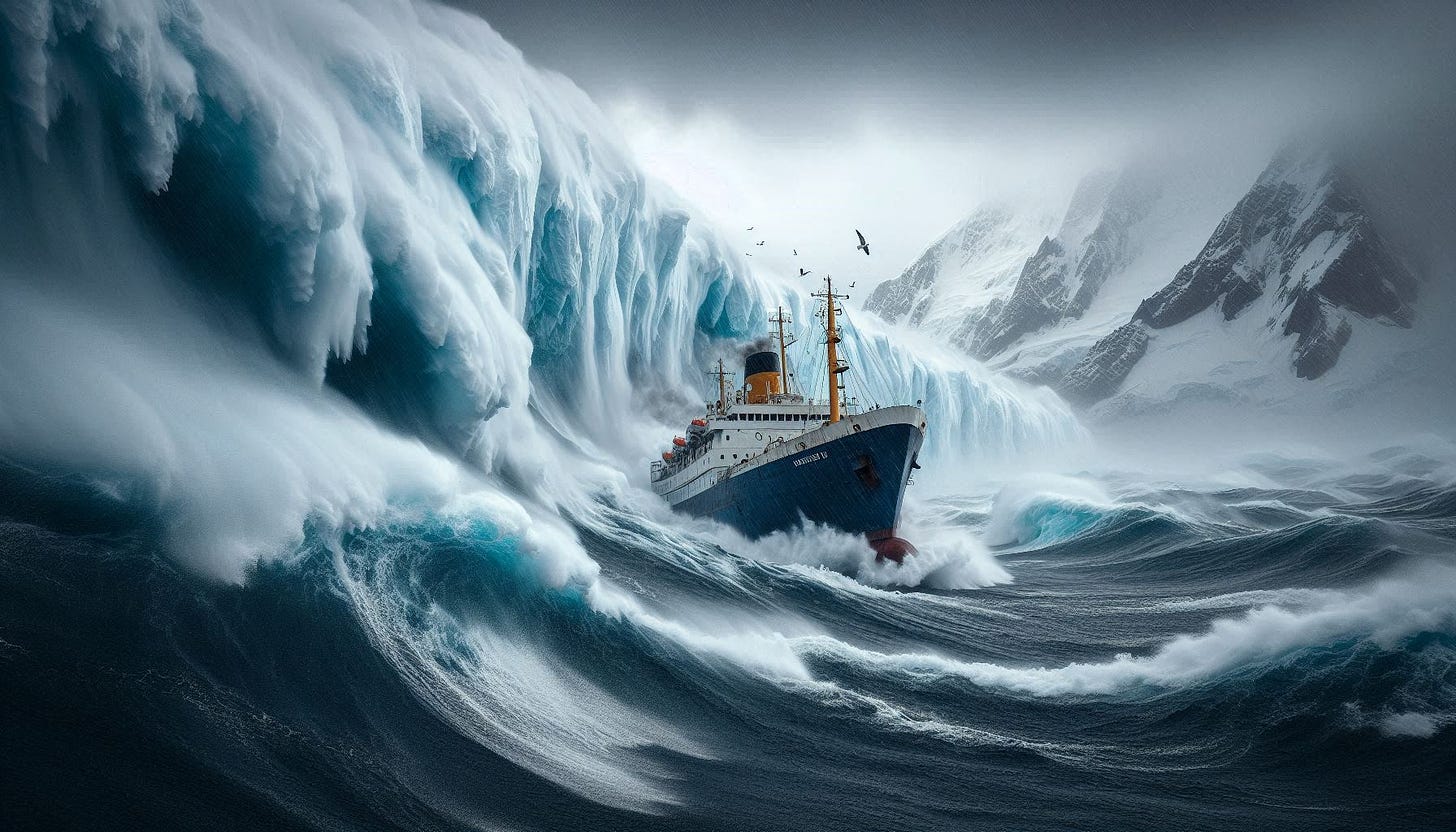How Crossing the Drake Passage Taught Me More on Leadership Than an MBA
Lessons from the Drake Passage: A Leadership Odyssey
It was in March 2019, five years ago, almost to the day.
I embarked on the last sequence of a journey I had started in 2014: running a full marathon on seven continents.
After over three years on the waitlist, we were finally going to Antarctica. The race proved epic, with ice, mud, hills, and hypothermia—a perfect combination for an unforgettable adventure.
Interestingly, though, when I think of that trip to Antarctica, I first remember how we crossed the Drake Passage and the real-life leadership lessons I got from these few days.
This route, situated between the southern tip of Patagonia in South America and the northern coast of Antarctica, is infamous for its treacherous weather conditions.
In other words, it’s one of the most dangerous sailing routes in the world!
We got lucky. The weather conditions were stormy but not extreme, and the waves were enormous but not gigantic. We also got a new daily companion: fog. And while Antarctica provided a picturesque backdrop, the masses of floating ice—aka icebergs—made it challenging to navigate through.
As if it were not enough, we knew the traffic was limited, and assistance would take longer if we ever turned into distress mode.
Our ship, a Russian polar expedition vessel, was ready for such a Passage. Most importantly, I was privileged to converse with the crew on how they handled the trip.
I couldn’t resist drawing a parallel with how the best leaders operate. Here are my key takeaways:
#1 – Preparation and Planning
No matter what venture, rule #1 remains. Our preliminary briefings with the crew quickly showed how thorough the preparation and planning were. Nothing was left to chance, and the captain and crew ensured we knew about their readiness. They even further associated us with the trip’s success by transparently sharing their strategy for the Passage and ensuring our full safety training.
#2 – Resilience and adaptation
The captain and crew were ready for the strong winds and rough seas we encountered on that Drake Passage. Nautical mile after nautical mile, our past trajectory revealed their wise decisions to avoid the most brutal conditions. They had anticipated the ever-changing conditions and knew how to adapt without losing sight of their goal: safely bringing us to and back from Antarctica.
#3 – Teamwork under Pressure
At one point, the conditions suddenly worsened. I observed firsthand how the captain helped his crew make the right calls, considering all the potential hazards. They altered our route at the last minute. They effectively assessed and mitigated risks to ensure our safety. And he did it in a way that still fostered a collaborative and supportive environment despite the tremendous pressure.
#4 – Continuous Learning
In one of my discussions with the crew, I realized how much respect they had for their most experienced members. They knew navigating the Drake Passage provided valuable lessons they could apply to future journeys. It was their way of embracing a mindset of continuous learning and improvement to stay ahead in an ever-changing environment.
We made it through without any significant incidents. Thanks to the captain and crew’s leadership, I never felt unsafe. I can say I thoroughly enjoyed that Drake Passage!
I’ll admit, though, that my wife Virginie has a “slightly” different recollection of how big and scary some of the waves were. Yet, after the heat of the moment, she’s the first to call it the trip of a lifetime.
As importantly, I’ve kept reflecting on these four lessons inspired by the challenges of the Drake Passage: preparation, resilience, teamwork, and continuous learning. Keeping them on top of my mind has proved tremendously helpful in my business ventures.
I trust it can help you, too, if you want to enhance your decision-making abilities and steer your organization toward success in the face of adversity.




